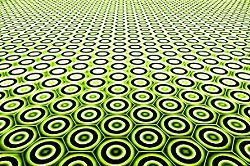Classification for nanomaterials of the future
The EU-funded NanoDefine project focused on the development of robust, cost-effective, validated measurement methods and instruments that reliably measure the size of nanoparticles in the EU-defined range of 1-100 nm in a variety of complex industrial materials and products. An ingenious adaptable e-tool to guide end-users and manufacturers One main outcome of the project is the NanoDefine e-tool that supports authorities, industry and researchers. As end-users, they participated in the selection of the most appropriate methods to determine whether a material should be considered, according to the EU definition, a nanomaterial or not. Dr Hans Marvin, project coordinator, outlines, “All these features incorporate the use of materials with different shapes, coatings and for the widest possible range of applications, in various complex media and products.” Implementing the EU definition will include all conventional particulate materials less than 100 nm to be classified accordingly, and the NanoDefiner e-tool comes with a manual containing details of all methodologies developed including many standard operating procedures. Particle sizer and a decision-making tool for unknown materials as well as multiple components In addition to the NanoDefiner, the researchers have developed several software solutions including an automated ParticleSizer that supports the e-tool. Using transmission electron microscopy for image analysis, the system automatically measures the distributions of the characteristic size, shape and other properties of potential nanomaterials. The results table can then be uploaded to the NanoDefiner e-tool. NANODEFINE research has been extended to materials with multiple components. “Nowadays, multi-element nanoparticles represent a substantial portion of manufactured materials and they are used as additives in a variety of common commercial goods such as cosmetics,” explains Dr Marvin. Results so far from research with project INNANOPART showed that for true multi-element analyses, a time-of-flight mass spectrometer is required. Dissemination and potential for the future The tool has been demonstrated to stakeholders at a training course in Wageningen, an outreach event in Brussels, and two technology transfer workshops in Frankfurt, where feedback was very positive. More than 900 users have individually accessed/requested the link to the tool in only four months. Access to the video explains how to use the NanoDefiner e-Tool. Significantly, discussions with the German Chemicals Industry Association have been aired as to how to bring the most promising rapid screening methods into more practical real-life applications. These include volume-specific surface area that correctly classifies a large set of diversely ranging particles and field-flow fractionation, a separation technique based on differing mobility. NANODEFINE has prepared an exploitation plan for commercially usable results now the project has ended. The NanoDefiner e-tool will be taken up by a partner – the Joint Research Centre, and once this is realised, potential upgrades may become feasible.
Keywords
NANODEFINE, e-tool, nanomaterial, NanoDefiner, EU definition, Particlesizer

